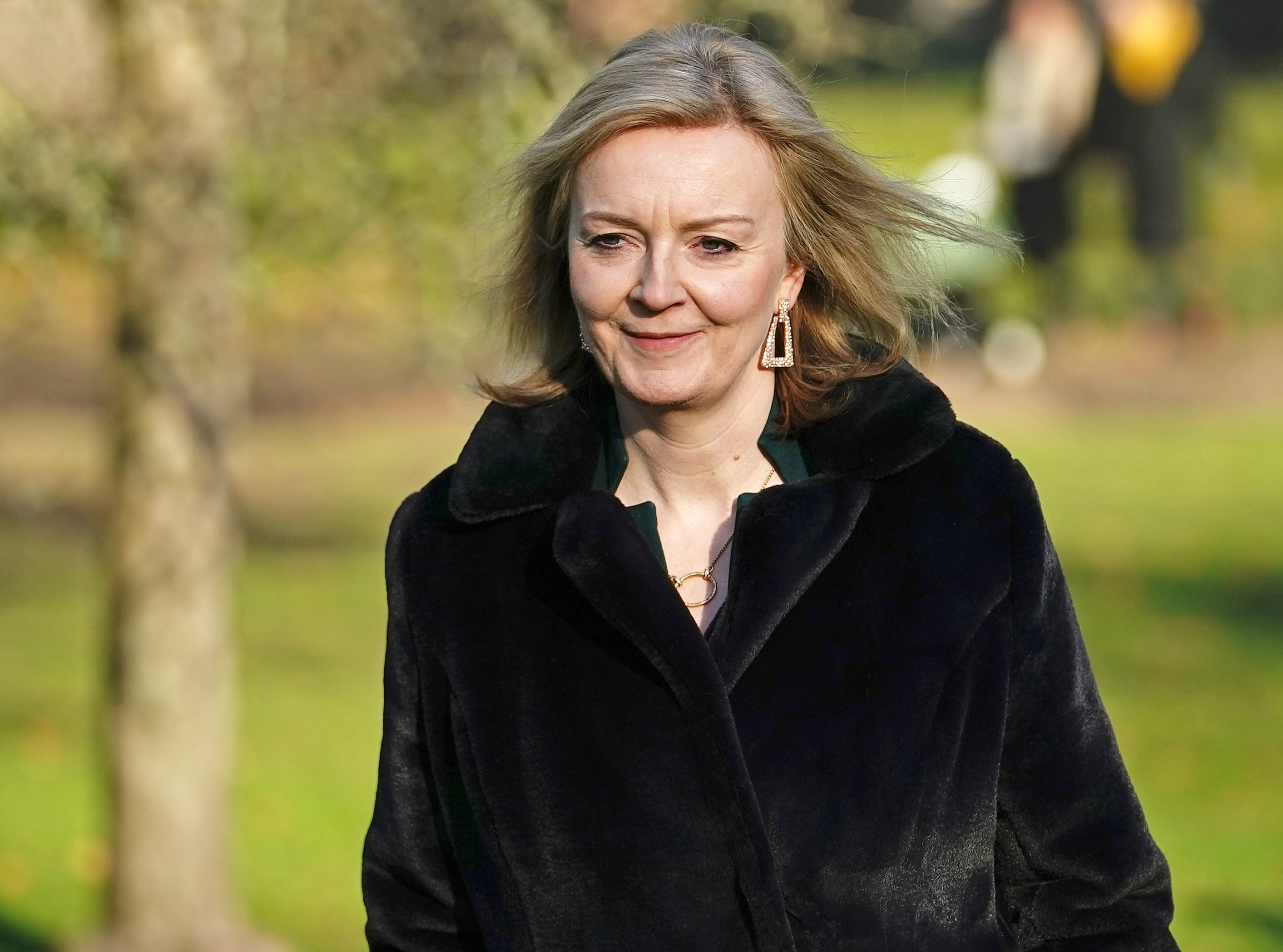Liz Truss slammed for taking private flight instead of train to Brussels
‘One day maybe there will be a direct train,’ quips Eurostar manager

Your support helps us to tell the story
From reproductive rights to climate change to Big Tech, The Independent is on the ground when the story is developing. Whether it's investigating the financials of Elon Musk's pro-Trump PAC or producing our latest documentary, 'The A Word', which shines a light on the American women fighting for reproductive rights, we know how important it is to parse out the facts from the messaging.
At such a critical moment in US history, we need reporters on the ground. Your donation allows us to keep sending journalists to speak to both sides of the story.
The Independent is trusted by Americans across the entire political spectrum. And unlike many other quality news outlets, we choose not to lock Americans out of our reporting and analysis with paywalls. We believe quality journalism should be available to everyone, paid for by those who can afford it.
Your support makes all the difference.Liz Truss has once again taken a trip on a private rather than a commercial flight – this time to a destination accessible within two hours by direct train.
The foreign secretary tweeted a picture of herself alighting the government’s private plane in Brussels, Belgium, alongside the caption: “In Brussels to co-chair a Joint Committee meeting with @MarosSefcovic on the Withdrawal Agreement.
“We continue to work intensively to find practical solutions that preserve peace and stability in Northern Ireland and protect the Belfast (Good Friday) Agreement.”
As social media users were quick to point out, flying for the meeting was arguably not strictly necessary considering a direct train service runs between London and Brussels.
The regular Eurostar service typically takes under two hours, with an average journey time of one hour and 53 minutes.
“One day maybe there will be a direct train...” quipped twitter user Justin, a Eurostar Train Manager.
Rail expert Mark Smith, better known as the Man in Seat 61, retweeted Ms Truss, commenting: “Sustainable travel latest: UK government still haven’t read the memo…”
From the picture shared by Ms Truss on Twitter, it appears she was travelling on one of four private planes reserved for use by the government and Royal Family: a British Aerospace 146 (BAe 146).
The 146 family of aircraft can be configured to hold 70 to 112 seats, or can be laid out in various VIP layouts in the ‘statesman’ configuration.
The round-trip on this particular aircraft type would have produced somewhere in the region of 15 tonnes of CO2 during the one hour and 10 minute flight there and back, according to online emissions calculator flightemissionmap.org.
A Eurostar journey typically produces more than 90 per less CO2 than an equivalent flight.
The foreign secretary is holding talks with a range of partners on key issues such as Russia/Ukraine while in Brussels, according to the Foreign Office (FCDO), which claims she could not have fit in her scheduled meetings had she travelled by train.
An FCDO spokesperson told The Independent: “We have government planes specifically so ministers, including the foreign secretary, can work while travelling. This is standard practice and in the national interest.
“Commercial travel options were not possible for this trip due to the foreign secretary’s busy schedule, and would have been more expensive.”
They also argued that travelling privately enabled the minister and her team to have discussions on sensitive security issues during the journey.
Ms Truss hit headlines last month for flying by private jet to Australia.
In an Independent exclusive, travel correspondent Simon Calder calculated that the trip cost the UK taxpayer over half a million pounds.
Instead of travelling from London to Sydney on one of the daily Qantas departures, Ms Truss flew the 22,000 miles to, from and within Australia aboard the private government Airbus A321.
The aircraft type holds 235 passengers on easyJet flights, but the government’s version is kitted out with a VIP interior – including lie-flat beds.
The mission to Australia and back burnt an estimated 150 tonnes of fuel and generated nearly 500 tonnes of CO2.
Join our commenting forum
Join thought-provoking conversations, follow other Independent readers and see their replies
Comments